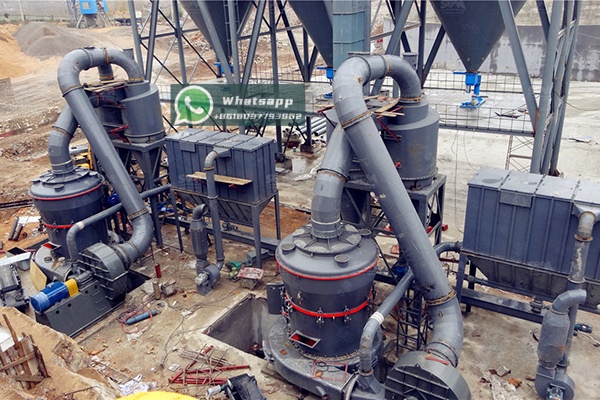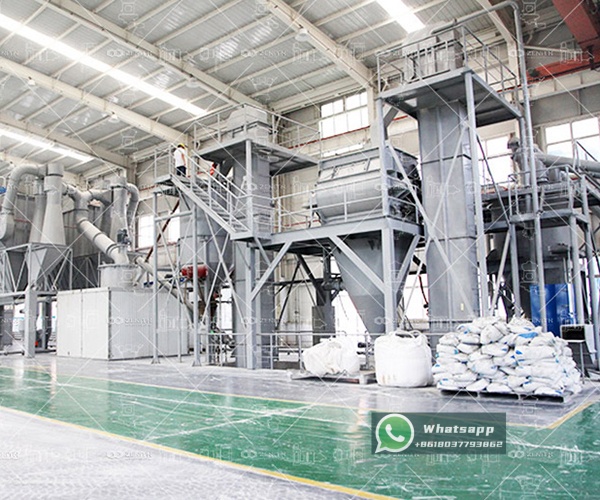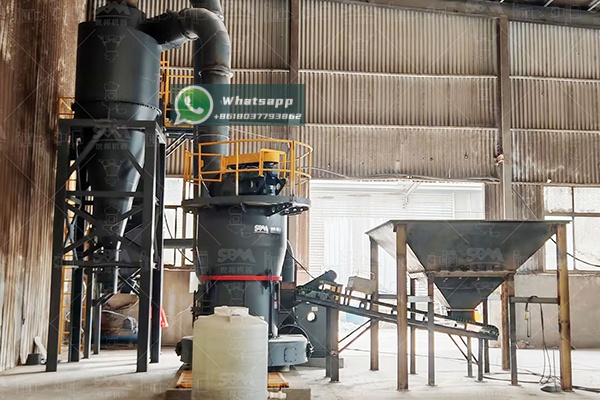The pearlescent pigment industry relies heavily on precisely engineered mineral substrates to achieve the optical effects that make these pigments so valuable in coatings, plastics, cosmetics, and printing inks. Among these substrates, mica stands as the most widely used and versatile core material. The quality of the final pearlescent effect—characterized by its luster, shimmer, and color travel—is intrinsically linked to the particle size distribution, surface smoothness, and purity of the mica flakes. This makes the process of ultrafine grinding not merely a step in production, but the very foundation of high-performance pearlescent pigments.
Natural mica, primarily muscovite, possesses a perfect basal cleavage, allowing it to be delaminated into thin, flexible, and transparent platelets. These platelets serve as ideal substrates for pearlescent pigments. A layer of metal oxide, typically titanium dioxide or iron oxide, is deposited onto the surface of these mica flakes. Light interacts with these multi-layer structures through interference and reflection, creating the characteristic pearlescent or iridescent glow.
The key to maximizing this optical performance lies in the geometry of the mica substrate. Flakes that are too thick will appear opaque and gritty, reducing the brilliance and transparency of the pigment. Flakes that are too small lose their planar geometry, diminishing the reflective surface area and the luster. Therefore, the ultimate goal of mica grinding for this application is to produce a high yield of thin, smooth, and uniformly sized platelets with a high aspect ratio (diameter-to-thickness ratio), typically within a narrow range of 5 to 150 micrometers in diameter and only a few hundred nanometers in thickness.

Grinding mica to meet the exacting standards of the pearlescent pigment industry presents several significant challenges:
To overcome these challenges, specialized grinding equipment is required. Traditional ball mills or Raymond mills are often insufficient as they tend to fracture the flakes. The industry has moved towards more advanced milling systems that combine grinding with integrated air classification.
Jet milling is a common method, where particles are accelerated to high velocities and collided with each other, primarily achieving size reduction through inter-particle attrition. This can be effective but may not always provide the most energy-efficient path to the desired platelet geometry. Vertical roller mills with integrated classifiers have emerged as a highly effective solution, applying a combination of compression and shear forces that are more conducive to delaminating mica.
Shanghai Zenith Machinery Co., Ltd. is an excellent manufacturer of ore grinding equipment in China, and has made great achievements in the field of ultra-fine powder grinding. Specialized in the research, development, and production of industrial powder grinding equipment, Zenith offers robust and technologically advanced solutions tailored for the demanding needs of the pearlescent pigment industry. Our mills are engineered to handle the delicate process of mica delamination while ensuring high throughput, low contamination, and precise particle size control.
For producers aiming for the highest quality mica substrate, we highly recommend our LUM Ultrafine Vertical Mill. This mill is specifically designed for producing superfine powders and excels in applications requiring precise top-cut control and a narrow particle size distribution. Its unique design integrates grinding, drying, classifying, and conveying, making it a comprehensive and space-saving solution.
The key advantages of the LUM Ultrafine Vertical Mill for mica processing include:
| Model | Main machine power (kW) | Capacity (t/h) | Size distribution D97 (μm) |
|---|---|---|---|
| LUM1525 | 220-250 | 1.6-11.5 | 5-30 |
| LUM1632 | 280-315 | 2.0-13.5 | 5-30 |
| LUM1836 | 355-400 | 2.3-15 | 5-30 |
For operations requiring processing of softer mica varieties or where a different fineness range is targeted, our XZM Ultrafine Grinding Mill is another excellent choice. It is widely used for superfine powder production and can achieve an output fineness ranging from 325 to 2500 mesh, offering great flexibility.

A typical ultrafine grinding circuit for mica involves several stages. Initially, raw mica is jaw-crushed to a manageable feed size for the fine grinding mill. The pre-crushed mica is then fed into the LUM or XZM mill, where it is ground between the rollers and the grinding table. The ground material is carried by the air stream to the integrated classifier. Oversized particles are rejected and returned to the grinding table for further processing, while the correctly sized, delaminated flakes are collected by a cyclone and bag filter system. This closed-circuit system ensures high efficiency and minimal product loss.
The success of the grinding process is verified through rigorous quality control. Laser diffraction particle size analyzers are used to confirm the PSD. Brightness and whiteness are measured using spectrophotometers, and the presence of any contaminating particles is checked. The final mica powder should exhibit high purity, a brightness (ISO) of over 80, and a carefully controlled particle size distribution tailored to the specific pearlescent pigment being manufactured.

The pursuit of brilliant and consistent pearlescent pigments begins with the meticulous ultrafine grinding of mica. This process demands more than just size reduction; it requires a technology that can delicately delaminate the mineral while preserving its valuable platelet geometry. Shanghai Zenith Machinery’s advanced grinding solutions, particularly the LUM Ultrafine Vertical Mill, are engineered to meet these exacting demands. By providing a combination of precise shear grinding, efficient classification, and low contamination, Zenith’s equipment empowers pigment manufacturers to produce superior mica substrates, which in turn, create the stunning visual effects that define high-quality pearlescent products in the global market.